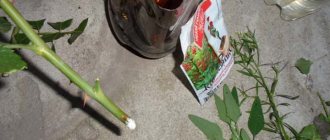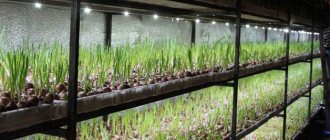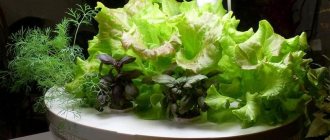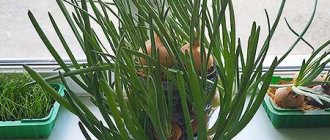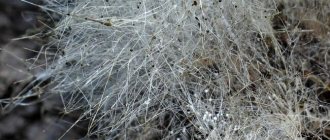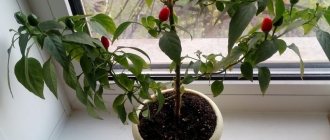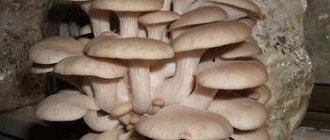How to grow quince from seeds
You need to buy at least one ripe fruit. It contains many seeds, from which gardeners grow the plant. When to plant quince from seeds? It is better to do this in late autumn. It is allowed even after the first snow has fallen, then in the spring you will notice friendly shoots. If you plant the seeds in the spring, they will not sprout immediately, but somewhere after 3 months. Therefore, autumn sowing is preferable.
Quince is undemanding to soil, but very responsive to organic fertilizers.
Mineral fertilizers are also used to feed the bush. To plant in acidic soils, you must first add a deoxidizing agent.
The plant easily tolerates both drought and moisture. But spring frosts can kill the buds, and you will be left without a harvest.
Properties of Japanese quince - harm and benefit
Beneficial features
The fruits of Japanese quince, as well as the products obtained as a result of their processing, contain a large amount of useful substances: vitamin C, vitamins B1, B2, pectins, which help remove heavy metal salts, trace elements of potassium, calcium and phosphorus from the human body.
The juice of ripe Japanese quince fruits has a diuretic, anti-inflammatory, immunomodulatory effect, and cleanses the walls of blood vessels from sclerotic plaques. Due to the sour taste caused by the high content of vitamin C in the fruit, the plant is called northern lemon. Japanese quince fruits contain several times more iron than pears and apples, so their use is indicated for anemia and exhaustion.
The fruits of Chaenomeles are used as an effective restorative, hemostatic, antioxidant, choleretic, diuretic and antiemetic agent, and decoctions, alcohol tinctures and aqueous infusions of Japanese quince have a tonic, antibacterial, antiulcer, astringent and diuretic effect. Aqueous decoctions of Japanese quince seeds are used in folk medicine as a laxative, enveloping and expectorant.
The pulp of Japanese quince fruits is rich in fiber, and when consumed regularly, constipation is cured, the functioning of the digestive organs is improved, in case of heart and kidney failure, excess water is removed from the body, and the symptoms of toxicosis during pregnancy are eliminated.
- Remontant raspberries: cultivation, diseases, varieties
Contraindications
Along with a huge number of advantages, Japanese quince also has some contraindications. Chinese doctors claim that the quince fruit is a strong allergen, so you can eat only one-fourth of this fruit at one time. Quince fruits, infusions, tinctures and decoctions of them are contraindicated for enterocolitis, pleurisy, stomach and duodenal ulcers, a tendency to allergic reactions and individual intolerance to the product. After eating quince fruits or its preparations, due to the high content of ascorbic acid in them, which corrodes tooth enamel, it is necessary to rinse the mouth thoroughly. The fuzz from the peel of the fruit is harmful to the vocal cords and causes a sore throat and cough, and the toxic seeds must be removed along with the seed pods before eating the fruit.
Japanese quince from seeds at home
Plant seeds must undergo stratification: they are placed in a humid environment at a low temperature. After the seedlings appear, they are transplanted into the substrate. At home, sand is used for stratification in combination with peat chips (ratio 1.5 to 1). You can also use just sand.
A layer of sand is poured into the bottom of a regular pot. Then the seeds are laid out, evenly distributed over this layer. They are covered with sand again on top. The contents of the pot are well watered and placed in a plastic bag. The container should be stored in a cool place. A cellar or refrigerator will do, the main thing is to monitor the temperature.
It should vary from 0 to +5 degrees.
The seeds are kept in this state until sprouts appear (about 3 months). At the same time, they are checked every two weeks and the moisture content of the sand is monitored.
Of course, a plant from cuttings will bear fruit faster. Quince from seeds will not begin to bear fruit immediately; you will have to wait until the bush forms. However, in taste it will be in no way inferior to its cutting counterparts.
Try growing quinces, because they are a great alternative to lemons. You can make delicious compotes, preserves from it and enjoy it all year round.
Domestic gardeners are increasingly interested in growing unusual trees in the garden, but it is not always possible to purchase the required seedling. How to grow quince from a seed at home so that every year the plant will delight you with juicy fruits and a decorative appearance: you just need to choose the right planting material and germinate it.
Pruning Japanese quince
The Japanese quince shrub tolerates pruning well, and this makes it a most valuable plant for ornamental gardening. To avoid injury, wear thick gardening gloves when pruning.
Planting and caring for pears in the garden
In the spring, sanitary cleaning of the bush is carried out: shoots frozen in winter, dry, damaged and improperly growing are removed. Places of cuts thicker than 7 mm are treated with garden varnish. Formative pruning is also carried out in the spring, before sap flow begins, but the crown of the plant begins to form at the age of four to five: to prevent the bush from growing wider and thickening, part of the root shoots are cut out annually, leaving only 2-3 young offspring. The most valuable are shoots located horizontally at a height of 20-40 cm from the ground. Shoots growing vertically or creeping along the ground must be removed.
When the bush reaches eight to ten years of age and the annual growth of shoots decreases to 10 cm, it is necessary to carry out anti-aging pruning. First, the bush is thinned out, leaving only 10-15 strong shoots. Since the main fruiting occurs on three to four year old branches, you need to gradually cut out branches that are five or more years old, replacing them with young shoots from the root shoots.
General description of culture
Quince is a heat-loving plant that takes root better in the southern regions of the country, but depending on the qualities of the variety, the tree can be planted in northern frost conditions. Quince reaches a height of 3 to 5 m in the form of a tree or is presented as an ornamental shrub, growing up to 1 m in height and spreading up to 2 m in width.
The plant bears fruit in September or October, depending on weather conditions and the variety. The fruits have a lot of useful properties and are widely used in the food industry and are included in medicinal ointments and preparations.
Varieties of Japanese quince
There are so many varieties of Japanese quince that you could write a separate article about them, so we will introduce you only to the most popular of them:
- Nikolai is a low-growing and thornless variety of Ukrainian selection with a spreading crown, orange-red flowers and slightly lumpy round yellow fruits weighing 50-80 g;
- Gaillardi is an ornamental plant with salmon-orange flowers;
- Malardi is an ornamental bush with pink flowers with a white border along the petals;
- Likhtar is also a Ukrainian non-thorny variety up to 1 m high, characterized by winter hardiness. The flowers are orange-red, the fruits are yellow-green, slightly lumpy, round, weighing up to 100 g;
- Papella is an ornamental plant with yellow flowers with a pink border;
- Fascination is a Dutch variety up to 1 m high with thorny branches, large red flowers, round or ovoid green fruits weighing 50-60 g;
- Merlozi is a Belgian variety up to 2 m high with relatively prickly erect branches, large white flowers with pink stripes and irregular pear-shaped green fruits weighing 60-80 g;
- Umbilicata is a Japanese variety up to 2 m high with erect, relatively prickly branches, pink-red flowers and spherical fruits weighing up to 90 g;
- Crimson End Gold is an American selection variety up to 1 m high with thorny spreading branches, medium-sized dark red flowers and greenish-yellow ovoid fruits weighing from 40 to 80 g with blush and thin skin;
- Simoni is a French variety 1-1.5 m high with spiny spreading branches, large dark red flowers and small, greenish-yellow ovoid fruits weighing 40-50 g;
- Nivali is a French variety up to 2 m high with dense prickly branches, medium-sized white flowers and yellow round fruits weighing up to 80 g.
In addition to those described, such varieties of chaenomeles as Toyo Nishiki, Snow Queen, Rubra, Vitamin, Ellie Mossel, Pomaranchevy, Karavaevsky, Kalif, Nika, Citrine, Fragrant, Krasnoplodny and others are popular.
Landing rules
To plant quince seeds, you need to determine what time of year is best to plant the plant in open ground. The germination and development of a planted tree is influenced by weather conditions, humidity, and climate features. Cultivation from seed is carried out in summer, autumn and spring.
To properly plant a quince, the following conditions must be met:
- planting is carried out only at a distance of 3.5 m from mature trees;
- the area should be well lit;
- it is desirable to avoid drafts;
- the high occurrence of groundwater does not interfere with the growth of quince, but it is still better to plant it in an area where the water is at a depth of at least 1.5 m.
Planting in summer
Planting in summer does not require much effort. Planting material harvested in the fall should be selected and disinfected in a weak solution of manganese. Within 3 days, the seeds will undergo disinfection treatment and will be prepared for planting in open ground.
For planting, dig a small trench with a recess of 10-15 cm. The seeds are sown at a distance of 3-5 cm from each other and covered with earth. Along the edges of the trench it is necessary to make a mound of soil to facilitate watering.
Planting in autumn
You can plant quince in the autumn. To do this, they take freshly picked fruits, from which the best seeds are selected. Place the planting material according to the same principle as in summer, only without pre-soaking.
In mid-November, it is necessary to cover the hole with sawdust and fallen leaves to protect the seeds from frost. During the spring thaw, remove the layer of leaves and sawdust so that the sprouts can break through the soil.
Planting in spring
You can plant quince in the spring after home stratification. With the onset of a comfortable air temperature, the sprouted seedlings are transplanted into specially prepared trenches or huge pots. A mixture of soil, peat, river sand and humus is specially prepared to create optimally comfortable growth conditions.
To plant, make a small hole in the prepared soil mixture and carefully place the sprout. Then it needs to be covered with earth, compacted, and watered.
Description of the bush
Japanese quince is a fruit shrub belonging to the Rosaceae family. The scientific name is Chaenomeles japonica.
Source: Depositphotos
In the wild, Japanese quince grows on the Japanese islands
The plant remains decorative from early spring until autumn. At the beginning of spring, 1–2 months before flowering, red-pink buds appear against the background of the branches. The shrub blooms for 3–4 weeks, covered with bright flowers on arched shoots. The color of the flowers ranges from soft coral to ruby and garnet shades.
Quince bears fragrant fruits in September. They contain a lot of ascorbic acid - 98-150 mg per 100 g and have a lemon flavor. The fruits are eaten raw or used to make sweets. For example, preserves and jams made from Japanese quince fruits are very tasty.
Features of care
Care must be timely: as the soil dries out, watering is required, it is carried out without undue enthusiasm, so as not to flood the plant and not lead to the formation of rot. During the winter, newly planted sprouts should be protected from frost and released with the arrival of spring.
Pruning of the plant is carried out when it reaches a height of 1 m; all vigorous, thin shoots are cut out. At the rate of intensive growth, organic fertilizers are applied every 1.5 months.
Planting quince seeds in autumn
Japanese quince is mainly propagated by cuttings, but the seeds also have good germination.
Growing Japanese quince from seeds
Many gardeners propagate Japanese quince by sowing the seeds of this plant before winter. Seeds are selected from the largest and ripest fruits immediately before sowing.
In the last days of October, planting material is laid out in holes to a depth of 1 cm. There should be a gap of 15 cm between the rows. For normal growth, the seeds are laid out at a distance of 5 cm from each other.
Plantings are mulched with peat or humus, which is slightly compacted. With this planting, quince seedlings will appear in May.
If Japanese quince is grown for its fruit, it should be planted in a sunny area. In a shaded place the bush will bloom, but the plant will not bear fruit.
You can grow Japanese quince seedlings at home. Until January, ripe Japanese quince fruits are stored in a cool and dry place. Seeds are collected from ripe large fruits. At the end of January, quince seeds are mixed with wet, washed river sand in a ratio of 1:3 and placed in a plastic bag.
To allow the seeds to breathe, several holes or punctures are made in the bag. Next, the quince seeds are placed in the refrigerator for stratification for 2-2.5 months. The package is kept at a temperature not exceeding 5°C at a relative humidity of 70%. The optimal place for stratification is the refrigerator.
Periodically, the sand with quince seeds needs to be moistened, making sure that mold does not form on it.
In March-April, Japanese quince seeds are sown as seedlings. For planting, use non-acidic soil, the pH of which is no more than 6-7 units. Seedlings obtained from seedlings grow to 40-50 cm by autumn.
When planting in open ground, quince seedlings are planted to a depth corresponding to the depth of the seedling box or pot.
A distance of at least half a meter is left between seedlings, and row spacing is placed at a distance of 2 meters from each other.
Caring for Japanese Quince
As with most plants, caring for quince seedlings involves loosening the soil, removing weeds and regular watering. If necessary, the bushes are fed with fertilizers, and in the spring the bushes must be pruned.
Fertilizers
Japanese quince is fed with fertilizers that are used for gooseberry or currant bushes. At the beginning of summer, Japanese quince is fed by leaves with mineral fertilizer, and humus is added to the soil at the rate of 0.3-0.4 kg per square meter of planting.
Trimming
Every year, quince bushes must be pruned to form a crown. It is mandatory to remove old non-fruiting branches over 5 years old.
The quince bush should not be dense - a well-developed bush has about 10-15 branches located parallel to the ground at a distance of 40 cm from the root collar.
All tops growing vertically should be cut out from the trunk, without waiting for the buds to awaken.
It is preferable to do spring pruning, since when this procedure is carried out in the fall, the bushes do not have time to adapt and do not winter well. In the spring, you also need to trim the branches that lie on the ground.
Wintering
To prevent the Japanese quince bush from freezing in winter, it is covered with spruce branches in late autumn. This material allows enough air to pass through so that the bush does not prop up, and also holds snow well. If the quince branches are not covered, in the spring it will turn out that most of them have frozen out. For snow retention, you can use small shields installed near the Japanese quince bush.
Quince is practically not damaged by diseases, not to the “taste” of the plant and pests. This makes caring for the plant much easier.
Growing Japanese quince on your site
Chaenomeles, or Japanese quince, is grown as an ornamental and useful fruit-bearing crop. During flowering, this unusually beautiful plant is a decoration of any garden, and its fruits make delicious desserts: preserves and jams. Chaenomeles is indispensable as a hedge around the site; its branched, strong root system holds loose soil.
Planting Chaenomeles
The best period for planting Japanese quince is spring, when the ground has already thawed and the buds have not yet blossomed.
A two-year-old plant planted from a container with closed roots takes root well. It is not advisable to plant quince in the fall; it loves warmth and may die before it has time to properly take root.
The plant also does not like frequent transplants, so it is better to immediately find a permanent place for it.
Selecting a location
When grown, the heat-loving Japanese quince prefers sunny places, sheltered from the wind. It is better to choose a corner for it on the south side, well illuminated by the sun, since in the shade the plant blooms poorly and develops poorly.
Preparing the soil for planting
Growing Japanese quince is not difficult; it grows well in almost any soil, with the exception of peaty soils. The main requirement for soil composition is the absence of salinity and lime inclusions. Chaenomeles develops best on soil that has good drainage, fertilizer and moderate humidity.
Beware of planting the plant on alkaline soil - chlorosis of the leaves will occur. The plant is resistant to dry periods, although at an early age, after planting, it needs moisture, but without stagnant moisture.
Before planting Japanese quince, you need to clear the soil of weeds; poor and heavy soil must be “diluted” with leaf soil and sand, fertilized with peat-manure mixture, as well as phosphorus additives.
Japanese quince care
Caring for it is not labor-intensive; it consists of weeding, loosening the tree trunks (only in spring and autumn), forming the crown and fertilizing.
Watering and fertilizing Chaenomeles
Chaenomeles does not require frequent watering, except during long dry periods. Before autumn night frosts, it is necessary to moisten the soil under young plants; the last watering is done depending on weather conditions in late October - early November. After harvesting, you can wash off the dust from the leaves with a hose.
In the summer, plants loosen the soil under the bushes, weed out weeds around them, and add mulch. The best period for mulching is late spring. The soil is well moistened by melted snow, but already warm enough. For mulch, you can use sawdust or crushed tree bark; you need to pour it, focusing on the diameter of the plant crown.
In the first year after planting, it is advisable not to feed with liquid compounds, so as not to burn the developing roots; moreover, the soil was already fertilized when planting. In subsequent years, immediately after the snow melts, mineral and organic fertilizers are applied. In summer, liquid fertilizers are used, for example, solutions of bird droppings or ammonium nitrate.
Quince pruning
Quince tolerates the pruning procedure easily. Most varieties of chaenomeles have rather sharp spines, so when you are about to prune the plant, protect your hands with good thick gloves.
Pruning quince in the spring is a sanitary procedure: dry and damaged branches need to be cut off with pruning shears or a small saw. The plant recovers quickly, especially if you lubricate the cut areas with a pre-prepared varnish.
The formation of the crown of the bush begins at 4-5 years of age, only in early spring. The same is done with the root system: to prevent the plant from growing too widely, part of the rhizome is removed.
Shoots that grow at the bottom or go very far up are also cut off. Quinces are rejuvenated by pruning when they reach 10 years of age. The plant is thinned out by cutting off thin and weak shoots that are deformed and elongated beyond measure.
When pruning, try to preserve the branches that bear fruit.
By the autumn period, tillering stops, all the juices and efforts of plant development are directed towards the fruits.
To prepare quinces for winter, you need to know when and how to prune quinces in the fall. There is no difficulty at all; pruning is carried out after the Chaenomeles fruits have been completely collected; they cannot be left on the tree.
Preparing the bush for winter
The older the quince tree, the more resilient it is. Young Japanese quince plants require more care and protection, especially in winter. The soil under young bushes needs to be well mulched and covered with spruce branches so that the roots do not freeze.
Don’t worry if you find frozen branches by spring, you just need to remove them. If you have a tall Chaenomeles species, bend the flexible branches of the plant to the ground - this will provide additional protection for its roots. An adult, well-grown plant, when covered with snow, can even withstand the cold.
Chaenomeles bark is a dessert for hares, so think about how to cover the quince trunk from rodents.
Reproduction of Chaenomeles in different ways
The unpretentiousness of Chaenomeles also applies to its reproduction. There is no need to have special knowledge and be tormented by the question: how to propagate chaenomeles, when the plant reproduces well without human help.
For example, a branch sprinkled with earth by a gust of wind will take root and sprout, and after transplanting the bush to a new place, shoots will appear on the old one for some time.
The plant reproduces in many ways, let's look at each.
The easiest method of propagation is to plant quince seeds in the fall. After harvesting the fruits, during storage as supplies, quince seeds are collected, dried and planted in the soil. They produce good strong shoots. If you didn’t have time before winter, sow the seeds for stratification and plant them in the spring.
In the spring, the grown seedlings are transplanted to a permanent prepared place; replanting quinces in the fall is not advisable.
On the warm days of June, green quince cuttings are cut early in the morning. Cuttings that have about a centimeter of old branch will take root well. They are planted in mixed soil of sand and peat (mixture: 3 x 1).
Distances are placed between the cuttings so that they do not interfere with each other’s development, and growth is stimulated by fertilizing with Kornevin. In warm weather, rooting will occur in 40 days.
Chaenomeles takes root well, the yield of rooted seedlings will be about 50%.
With the help of vaccination
Quince grafting is carried out in May. Varietal scions for eye grafting are prepared in advance (late July - early August), and a bud with part of the bark is cut out in the middle part of the sprout. Then an incision is made on the rootstock in the shape of the letter “T”, bending the edges of the incision, and a bud eye is implanted. The scion site is compressed, wrapped and lubricated with garden varnish.
The next year in the spring, when the scion sprouts, the bandage is removed. You can “plant” several eyes on low-growing plants. It is advisable to place the scions closer to the ground to protect them from winter frosts. To improve the crop, rootstocks of pear, hawthorn and rowan are taken.
For the winter, grafted plants need to be covered with spruce branches; you can build wooden shields from the wind and to retain snow.
Root suckers
The root system of Chaenomeles develops quite quickly and spreads over a large area. This allows the plant to be propagated by root suckers. To do this, well-developed shoots about 15 cm long are selected from the rhizome.
The shoots are planted vertically, watered, maintaining moderate soil moisture. It is necessary to mulch around the sprout with humus or wood shavings. This is not the best way to propagate quince, since at first the plant does not bear fruit well.
Harvest and storage
At the end of September, and in some regions in October, the period begins when quince can be harvested. If you carefully and promptly care for the plant, you can collect up to 3 kg of fruit from one tree.
Useful properties of Japanese quince
Japanese quince consists of more than 5% organic acids and contains about 2% tannins.
Chaenomeles fruits have more vitamin C than lemons, and it is preserved during heat treatment. Therefore, quince fruit products are used as a means to prevent viral seasonal diseases.
Quince contains vitamins: B1, B2 and P; pectins and microelements: phosphorus, potassium and calcium.
Pectins contained in fruits help remove heavy metals and toxins from the blood, which is very useful in poor ecology. Fresh quince juice has a beneficial effect on atherosclerosis, anemia and hypertension problems. Chaenomeles lowers cholesterol levels in the blood and strengthens the walls of blood vessels.
A decoction of quince seeds reduces inflammation of the eye mucosa and stops bleeding; lotions treat burns and skin irritations.
A flowering plant with its colorful appearance in itself lifts your spirits, and fruit processing products will increase the tone of your body.
Seed preparation
To grow a new tree from a seed, you will need at least one mature fruit without rot, mechanical damage or mold.
The best time for germination is late autumn. By this time, the new crop on the trees ripens. If you plant the seeds in the spring, you will see the first seedlings no earlier than three months after sowing. Therefore, many people prefer autumn planting.
Stratification
Cut the quince in half and remove the seeds. To stratify the seeds in February, you will need slightly moistened sand. Seeds (1 tablespoon) are mixed with sand - 1 liter. The mixture is placed in a plastic bag, sprayed with a spray bottle and tied tightly. Using a needle, several holes are made at the bottom of the bag to provide the seeds with access to oxygen.
A bag of sand and seeds is placed in a cool place - basement, cellar, vegetable department of the refrigerator. In cool conditions at temperatures from 0 to 5 ° C, the seeds are kept until they germinate. This process will take about three months. Therefore, to prevent the seeds from rotting, molding or drying out, they are periodically ventilated and irrigated with warm water from a spray bottle.
How to propagate Japanese quince
If you do not have the opportunity to purchase a ready-made quince seedling, you can get a new specimen from a bush already existing on the site. Japanese quince is propagated in 5 ways. From cuttings, seeds, root shoots, rhizomes or layering you can get a full-fledged shrub that will begin to bear fruit within 3-4 years of cultivation.
Seeds are taken from fully ripened fruits
Seed method
This is the easiest and most effective way to grow a plant. For planting you will need seeds from the fruits of the new harvest.
In autumn (September or October), the seeds are removed from the pulp and planted in open ground. The survival rate of seeds during autumn planting is 50-60%. The risk of them freezing is too great. Therefore, many gardeners plant seeds in the spring after the threat of the last frost has passed.
Before spring, the seeds are stratified. First, soak in warm water with the addition of any growth stimulant. After 2 hours of soaking, the seed is mixed with wet coarse sand in a ratio of 1:10. The mixture is poured into cellophane, tied tightly and placed in the lower section of the refrigerator.
To provide the seeds with access to oxygen, several holes are made at the bottom of the bag with a needle or awl.
In such conditions, the seeds will be stored for about 3-4 months. During this time, they should be periodically inspected for mold and rot. Rotten specimens are removed. To prevent drying out, the seeds are periodically moistened with a spray bottle and ventilated no more than once a week.
If everything is done correctly, the quince seeds will hatch by spring. They are planted in shallow grooves (2-3 cm) with a nutritious and light substrate (humus, sand, garden soil and wood ash, mixed in equal quantities).
By layering
Another simple way to propagate chaenomeles easily and quickly. This breeding takes place in early autumn.
The lowest branches extending from the bush are placed in dug grooves 8 cm deep. Before planting the shoots, the soil is fertilized with humus, superphosphate and wood ash. The branches are fixed with staples or pins. Sprinkle with garden soil and water generously with warm water.
During the rooting process, the cuttings are periodically watered and mulched with peat or humus. Already next year (in spring) the branch will produce the first roots on the plants. It is separated from the mother bush and planted in a new habitat.
To separate cuttings, use a sharp garden shovel or pruning shears. Young plants are planted at a distance of 1.5 m from each other.
Root shoots
As it grows, this shrub becomes overgrown with root suckers, which can be used to produce new specimens.
In the spring, as soon as the heat stabilizes, the strongest shoots are selected, dug up along with the roots, and planted at a distance of 1 m from each other. Use suckers at least 1 cm thick and about 12 cm long.
In order for plants to quickly take root in a new place, they are planted in nutritious soil, as when planting cuttings. After planting, water generously with warm water and mulch the tree trunk circle with sawdust.
Quince seedling
By dividing the rhizome
The Japanese quince bush itself cannot be divided into parts, but you can separate a couple of shoots from it. New plants are planted in the fall.
Young bushes are placed at a distance of 0.5 m. Water abundantly and mulch with peat or humus.
As in the previous propagation method, from such shoots you will not get a strong plant that will delight you with a rich and high-quality harvest.
Conclusion
This shrub also reproduces independently. But with this method, it loses its decorative effect and produces small and tasteless fruits. Use one of the above methods for obtaining a new plant, provide it with proper care, and in return you will receive a decorative and abundantly fruiting bush.
Sowing seeds
Planting seeds at home is carried out using seedling containers or flowerpots. You can also use any other yogurt or sour cream container. The main thing is that it has holes for the drainage of excess moisture.
A drainage layer of broken shards, pebbles or expanded clay is placed at the bottom of the container. Then a nutrient substrate is laid - from sand (1 part), peat (2 parts) and leaf soil (2 parts).
The seeds are planted at a distance of 10 cm from each other. As the plants grow, they are planted at a further distance - about 20 cm from each other. As soon as 1-2 pairs of leaves appear on the young shoots, they are planted in open ground on the site. If the seeds are sown in February, then at the end of September or at the beginning of October you will receive ready-made plants for transplanting into the soil.
Disembarkation
There are 2 ways to grow quince from seeds: plant stratified seeds directly in open ground in the garden or in seedling containers at home.
In the open ground
Seeds are planted in open ground at the end of October. February seeds will be ready for planting in the last ten days of April or early May.
Seeds require nutrients for proper germination. Use a plot of soil enriched with humus. If planting occurs on poor soil, you can fertilize it with compost or rotted manure. 7-8 kg of nutrient component are added per 1 m2 of area. After this, the area is dug up and left for two weeks.
Crop care
Seeds germinate in about 1-1.5 months, provided good care is taken.
- good lighting with protection from the scorching sun;
- Temperature range: 23-25 °C;
- moderate air humidity - within 50-60%.
To ensure temperature stability, the crops are covered with transparent glass if they were sown in a seedling container. You can cover seedlings in pots with half a transparent plastic container.
To maintain humidity at the proper level, crops are regularly irrigated with a spray bottle, then ventilated.
Under such conditions, by autumn the seedlings will reach 50-60 cm in height and will be ready for planting in a permanent habitat.
Using root suckers
Root suckers are nothing more than shoots that a tree regularly produces. Having grown to a certain size (height 12-15 cm and thickness 0.5-1 cm), it becomes full-fledged seedlings that can be separated from the mother bush and transplanted to a permanent place of growth. Propagation of quince by offspring is considered the easiest and least labor-intensive method, since the gardener only needs to separate the seedlings and replant them. A significant advantage is that such plants take root quickly and almost 100%, because they already have developed roots.
You can plant offspring from the mother bush both in spring and autumn, but for cold climates spring planting is desirable.
Technically, this is very simple to do: you need to separate the shoots, trying not to damage the root system, then plant them in pre-prepared planting holes at a distance of 1-1.5 m (depending on the variety).
After planting, seedlings should be well watered and mulched with organic material. Until they take root in a new place and begin to grow, it is necessary to maintain constant soil moisture.
Planting plants in the garden
Site preparation is carried out in the spring. The area is cleared of plant debris and sprinkled with organic fertilizer (humus or compost - 1 bucket of the substance is used per 1 m2). Then the site is deeply excavated. When planting in the fall, the soil is leveled with a rake, thereby increasing its breathability.
Japanese quince is planted from seeds to the same depth as when grown at home - about 20-30 cm. Planting too deep will lead to rotting of the root zone and the plant will not be able to fully develop.
Landing is carried out according to the following scheme:
- distance between bushes - 0.8-1 m;
- the distance between rows is 2-3 m.
The planted plants are watered abundantly and mulched with a peat layer (4-5 cm).
Peat can be used to mulch the soil
Japanese quince in landscape design
Chaenomeles is rightfully considered one of the most beautiful ornamental shrubs: rich green leaves shimmering in the rays of the sun, massive bright flowers of various colors, amazing yellow-orange or greenish-yellow fruits that simultaneously resemble apples and pears... The main advantage of the plant is that that it remains attractive throughout the growing season, from spring to late autumn. And since the lifespan of the plant is several decades, the ornamental Japanese quince will decorate your garden for almost your entire life.
In landscape design, not only tall varieties of Chaenomeles are used: low Japanese quince, reaching a height of no more than 1 m, with arched branches covered in spring with a mass of flowers, is also incredibly attractive.
Chaenomeles japonica is widely used to form rocky gardens and hedges. It is grown both as a solo plant in a rock garden or on a spacious lawn, and in groups forming artistic or geometric compositions. A popular method of growing Japanese quince on a high trunk is done by grafting its cuttings onto a wild pear or mountain ash.
The plant goes well with dwarf spruce, slate pine and varietal thuja. Blooming Japanese quince looks spectacular next to daffodils and Carpathian bells.
Care after disembarkation
Japanese quince is a perennial shrub that needs good care. To ensure good health, high decorativeness and high-quality fruiting you will need:
- Regular watering. Quince is a plant that does not require moisture. But still, in some periods of life, to maintain its decorative qualities, it requires abundant watering - in early spring (before the buds begin to swell), before flowering and at the stage of formation of fruit ovaries. It will also not be superfluous to charge this shrub with moisture before wintering, which will increase its frost resistance.
- Fertilizing is applied in the third year after planting. Both organic and mineral preparations are used. Organic matter (weakly concentrated bird droppings, slurry or rotted manure) is applied twice per season - in early spring and late autumn after leaf fall. Mineral components (superphosphate and potassium salt) are used 3 times: before flowering, during the formation of fruit ovaries and after harvesting. All components are added in accordance with the instructions on the package.
- Loosening the soil and mulch. The first procedure is carried out one day after each watering. It is mandatory and useful for shrubs, as it increases the moisture and breathability of the soil. Mulch protects young plants from frostbite in winter and saturates the roots with nutrients.
- Trimming. One of the main procedures for this ornamental shrub. This procedure helps to form a correct and beautiful crown, improve the quality of flowering and fruiting. The first cutting is done the next year after planting the sprouts. Shorten all shoots by a third of the length. This procedure stimulates the growth of young cuttings, which will give the crown a fullness and spherical shape. The next spring pruning is carried out according to the same principle - one-year and two-year shoots are cut to 10-15 cm in length. Also remove all damaged, frozen and dried out branches. In adult shrubs, anti-aging pruning is carried out, which involves the complete removal of all five-year-old shoots and shortening of younger branches by 1/3 of the length.
How to plant common quince
Common quince is grown in the form of a bush or tree; it grows from two to seven meters in height. In order for the plant to develop well, it must be protected from drafts and provided with good lighting during the day.
The roots of the plant are located in the surface layer at a depth of up to 70 cm, but they grow quite far in width, up to 2 meters. Quince can be planted next to apple and pear trees, but at a distance of 5 meters.
An adult tree does not tolerate transplantation well; we plant the seedling immediately in a permanent place. For abundant fruiting, it is recommended to plant several varieties of common quince on the site.
Quince grows well on turf soil, black soil, clay soil and loam. If the soil is sandy, a layer of clay must be placed at the bottom of the planting hole.
Quince can be planted when the groundwater level is high; the plant can tolerate prolonged stagnation of water without negative consequences. We dig shallow planting holes, 40 cm; their size is 60 x 60 cm. Leave at least 4 meters between plants.
Add fertilizers to the soil for planting:
- ash – 50 g;
- superphosphate – 150 g.
Fill the hole with soil mixture a few days before planting and pour a bucket of water into it. Planting stages:
- We remove some earth from the hole.
- We place the seedling in the hole, making sure that the root collar is at soil level.
- We straighten the roots horizontally and cover them with soil.
- We form an earthen roller 5–7 cm high along the perimeter of the crown to retain water.
- Pour 3 – 4 buckets of water into the tree trunk circle.
- We mulch the planting area with peat, rotted sawdust or dry leaves. When planting in spring, the layer thickness is 5 cm, when planting in autumn - 10 cm.
- If the roots of the seedling are damaged, its shoots can be shortened by 1/3 of the length and half of the leaves removed. These measures will help the plant’s root system recover faster.
Growing and care
Quince is an unpretentious plant. To get a good harvest, it is enough to carry out simple agrotechnical measures in a timely manner. Quince is propagated by seeds, cuttings and root shoots.
Propagation of quince by cuttings (video):
An adult plant will easily tolerate drought; young seedlings must be watered regularly. During the growing season, an adult quince is watered 3 times:
- before flowering begins;
- in June, for better development of the tree;
- at the end of summer, for better fruiting.
Quince responds well to feeding. We apply fertilizers after watering so as not to burn the roots.
- In the spring, when loosening, we apply nitrogen fertilizers to the tree trunk circle - 30 g per 1 sq. m.
- In summer, the plant can be fed with organic fertilizers, an aqueous infusion of chicken droppings or slurry.
- In the fall we feed with potassium and phosphorus fertilizers, adding 20 g per 1 sq. m. and dig up the soil to a depth of 10 cm.
Pest and disease control
Quince has a strong immune system, but preventive spraying will not hurt. We treat with copper preparations 2 times during the growing season; you can use Bordeaux mixture (3% solution):
- in early spring before buds open;
- in the fall, after harvest.
In pest control we use traditional drugs - Karbofos, Iskra, Fitoverm and others. We stop treating with insecticides a month before harvesting the fruits. The exception is biological products such as Fitoverma; they can be used a week before harvesting.
- We cut off all damaged and frozen shoots.
- We shorten last year's growth by 1/3 (branches up to 50 cm) and longer shoots by ½.
- We cut out the tops (vertically growing branches).
- We cut out the branches that thicken the crown.
How to trim a quince (video):
Formative pruning must be done for 5 years, after which you can limit yourself to only sanitary pruning. When growing quince in the form of a tree, the lower tier of branches should be located at a height of 50 cm from the measles neck or grafting site. To grow in the form of a bush, an annual seedling is shortened at a height of 40–50 cm and 4–5 skeletal branches are left growing at different angles.
Fruit harvesting
The fruits take a long time to ripen. They are removed only when they turn yellow and become fragrant. Depending on the variety, harvesting can be done in September - October. The photo shows quince fruits.
Preparing for winter
Before the onset of cold weather, moisture-recharging irrigation should be carried out using at least 40 buckets of water. The quince root system is located close to the soil surface, so there is a risk that it may be damaged by frost.
- In the fall, we mulch the root area with a layer of rotted manure.
- We cover the grafting site and the root area of the trunk with spruce branches.
- We cover young seedlings with spruce branches.
In places with harsh winters, quinces are wrapped in non-woven material (spunbond, lutrasil) and tied with spruce branches.
Pests and diseases
Another problem that gardeners face when growing quince from seeds is the infestation of diseases and parasites.
To save young plantings from their attack, a number of preventive measures should be taken:
- annually in the fall to clear the area of remnants of vegetation;
- carry out deep digging of the soil in the fall;
- regularly and properly feed plants to increase immunity from diseases and pests;
- carry out annual pruning of damaged, shriveled or rotten branches;
- Carry out periodic inspections for the presence of parasites and infections.
Also in spring and autumn, plants are sprayed with a solution of Bordeaux mixture or copper sulfate.
Quince: planting and care
Landing
When choosing a site for planting quince, it is recommended to pay attention to illuminated places with black soil, loamy or sandy loam soil. Since plants do not grow well in drafts and are afraid of northern winds, it is better to plant quince in the south or southwest of the site.
Video: planting quince
Plants should be spaced at least 1.5 meters apart to allow enough space for branches to grow as they grow. A note to gardeners: when planting a seedling grown from seeds, the seedlings deepen the root collar no more than five centimeters. Otherwise, the quince will grow slowly.
Caring for the Japanese quince bush does not cause much trouble:
- watering and loosening the soil in the tree trunk circle;
- weed removal and mulching;
- feeding and pruning for proper crown formation.
Since quince is a drought-resistant plant, it is not watered often. When planting a bush, a bucket of compost, potash fertilizers and superphosphate are poured into the hole. This food will be enough for the young seedling until next spring. Subsequently, the plant is fed with infusions of mullein and chicken droppings.
Young seedlings need shelter for the winter. A box is placed on the bush and covered with spruce branches and leaves on top. When grown in harsh climatic conditions, the shelter had to be more substantial.
Trimming
Formation of the crown and pruning of quince are not done in the first year after planting the seedling. Next spring, cut off damaged branches and remove shoots growing close to the ground. In the fall, significant pruning is carried out without waiting for frost.
On each plant, 10-15 skeletal branches of different ages are left. If the number of branches on a quince is limited, you can stimulate their growth during crown formation by shortening them by a third. In subsequent years, you will have to remove weak shoots, poorly fruiting branches and those that grow inside the bush.
Rules of care
It is important not only to know how to grow quince from seeds, but also which young plants require care. The growth, development and fruiting of young trees will depend on this.
Watering
Quince is a moisture-loving crop, so during the growing process it should be watered regularly and abundantly. The plant needs to be watered at least 5 times throughout the entire season.
The first moistening is carried out in early spring - before the buds begin to swell, then during the flowering period and two weeks after the tree has finished flowering. Water the plants when the ovaries form and during the period of fruit ripening.
Trees are watered abundantly at the end of autumn - a month before the onset of frost. By this time they will have shed their leaves. Such moisture-recharging watering saturates the roots and crown of the tree with moisture and provides it with good winter hardiness.
Trimming
Starting from the moment of planting, one of the main tasks of the gardener is the formation of the crown of the quince. Typically, such a fruit tree is given a sparsely tiered crown:
- In the first year of life, immediately after planting, the central branch is cut to a third of its length in order to stimulate the growth and development of lateral branches.
- The next year, the central conductor is cut by 20 cm and the most developed shoots (3-4 pieces) are selected, located at a distance of 20 cm from each other, the rest are cut off. The branches should have an inclination angle of 40-45 °C. Since shoots growing at an acute angle will break off under the weight of the fruit. Above the branches of the lower order, another 5-6 branches are left to form the upper tier.
- After crown formation, young trees are moderately shortened annually to stimulate subsequent branching. The crowns of fruit-bearing trees are thinned, leaving the growth intact.
- Anti-aging pruning is carried out on old trees and on specimens with reduced productivity. All branches are pruned to a length of 20 cm, which stimulates the development of young shoots.
Feeding
In the first years of life, young plants planted in fertile soil do not need nutrition. In the third year, the soil around the tree trunk is sprinkled with rotted manure or compost. Then digging is done. During the entire growing season, organic matter is applied twice - in the beginning of spring and in the fall - after leaf fall.
Whitewashing the trunk will protect the tree from pests
Mineral fertilizers are applied during the period of flowering and formation of ovaries. For this purpose, superphosphate and potassium salt are used.
Loosening and mulch
Quince grown from seeds likes to grow in loose and moisture-permeable soil. Therefore, in the first years of life, the soil is loosened for plants.
Considering that this plant has a shallow and well-developed root system, you should not loosen the soil too deeply so as not to damage the delicate roots.
Mulching is carried out both to nourish the roots and to protect young seedlings during the winter cold. I use peat, fallen leaves or spruce branches as mulch.
Additionally, young plants growing in the northern zone or in the regions of the middle zone are covered with cardboard or wooden boxes, lutrasil or roofing felt.
Prevention of diseases and pests
During the growth process, young plants are especially susceptible to diseases and pests. Therefore, for prevention purposes, spring and autumn treatment of crowns with fungicides and insecticides is carried out. In autumn, tree trunk circles are treated with slaked lime.
Reproduction of Chaenomeles in different ways
The unpretentiousness of Chaenomeles also applies to its reproduction. There is no need to have special knowledge and be tormented by the question: how to propagate chaenomeles, when the plant reproduces well without human help. For example, a branch sprinkled with earth by a gust of wind will take root and sprout, and after transplanting the bush to a new place, shoots will appear on the old one for some time. The plant reproduces in many ways, let's look at each.
The easiest method of propagation is to plant quince seeds in the fall. After harvesting the fruits, during storage as supplies, quince seeds are collected, dried and planted in the soil. They produce good strong shoots. If you didn’t have time before winter, sow the seeds for stratification and plant them in the spring.
In the spring, the grown seedlings are transplanted to a permanent prepared place; replanting quinces in the fall is not advisable.
On the warm days of June, green quince cuttings are cut early in the morning. Cuttings that have about a centimeter of old branch will take root well. They are planted in mixed soil of sand and peat (mixture: 3 x 1). Distances are placed between the cuttings so that they do not interfere with each other’s development, and growth is stimulated by fertilizing with Kornevin. In warm weather, rooting will occur in 40 days. Chaenomeles takes root well, the yield of rooted seedlings will be about 50%.
With the help of vaccination
Quince grafting is carried out in May. Varietal scions for eye grafting are prepared in advance (late July - early August), and a bud with part of the bark is cut out in the middle part of the sprout. Then an incision is made on the rootstock in the shape of the letter “T”, bending the edges of the incision, and a bud eye is implanted. The scion site is compressed, wrapped and lubricated with garden varnish. The next year in the spring, when the scion sprouts, the bandage is removed. You can “plant” several eyes on low-growing plants. It is advisable to place the scions closer to the ground to protect them from winter frosts. To improve the crop, rootstocks of pear, hawthorn and rowan are taken. For the winter, grafted plants need to be covered with spruce branches; you can build wooden shields from the wind and to retain snow.
Root suckers
The root system of Chaenomeles develops quite quickly and spreads over a large area. This allows the plant to be propagated by root suckers. To do this, well-developed shoots about 15 cm long are selected from the rhizome. The shoots are planted vertically, watered, maintaining moderate soil moisture. It is necessary to mulch around the sprout with humus or wood shavings. This is not the best way to propagate quince, since at first the plant does not bear fruit well.
Read also: Large-leaved hydrangea planting and care in open ground in the Urals
